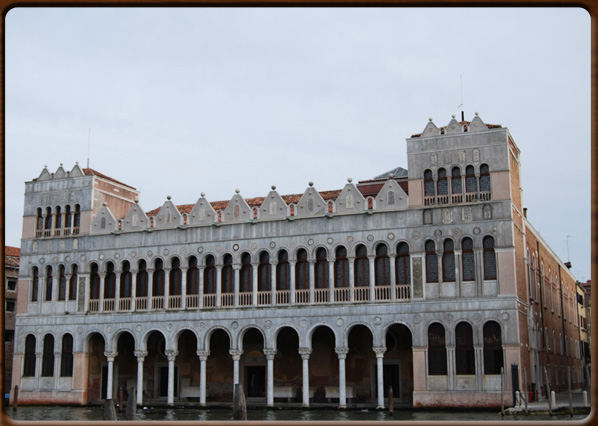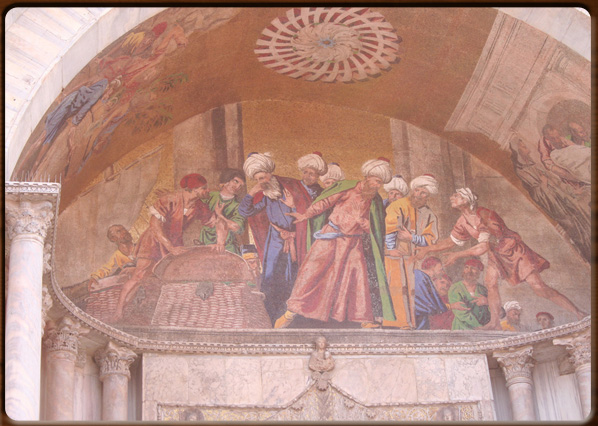
Fondaco (depot) of the Turks.

St.Mark's Basilica, frescos.


No video
Despite constant threats and wars between the Ottoman Empire and the Serenissima, Venice always maintained business relations with the Turks. Venice had a liberal immigration policy, thus allowing many Turks to live in the city (albeit for only short periods and never bringing with them their families). The Turks had started staying in privately owned houses and inns in the area of Santi Giovanni e Paolo in 1516 and later in Cannaregio.
In 1570, at the beginning of the War of Cyprus against the Ottoman army, the bailo Barbaro, the Venetian Ambassador in Constantinople, and several Venetian merchants were arrested.
In 1571 Venice decided to take similar action against the Turks, detaining merchants and seizing their goods. A large proportion of the Jewish community in Venice was also arrested, accused of having favoured the war against Cyprus. The Venetian Senate was convinced that the assets of wealthy Jews would speed up negotiations for the release of the Venetians held in Constantinople, given the Ottomans’ interest in acquiring these assets.Increasing hatred of the Ottomans provoked violent clashes between Christians and Muslims. The Senate then decided to set aside an area of the city for the Turks to stay and ply their trade in safety, just as it had for the Jews in the Ghetto.
In 1574, a Venetian citizens of Greek origin, Francesco de Dimitri Littino, proposed that the Council of Ten should find a building that, with careful monitoring and management, could be used to host all the Turks in Venice. They would thus be prevented from moving freely around the city and from committing crimes. The introduction of a tax on persons and a fixed duty on goods were also proposed to cover the cost of this new residence. The proposal was discussed in 1602 and it was suggested that a fondaco similar to that for the Germans should be created for the Turks. Many senators disagreed, arguing that the result would be a hotbed of crime and the propagation of the Sultan’s propaganda and adoration of Allah. Meanwhile, the Muslims continued to live under the control of the Littino family in Ca’ Vendramin. However, the Venetians claimed the Turks continued to cause problems owing to their disrespectful behaviour towards the nearby church of San Matteo.
In 1621 the Cinque Savii alla Mercanzia council (literally, five wise men in matters of commerce) decided to move the Turks to a large house on the Canal Grande belonging to the Duke of Ferrara. From that point on, the building would house all the Muslims, Albanians, Bosnians and Asians in Venice, along with their goods. Guards were placed around the building to prevent any irate Christians from entering. The windows were closed on the outside and a perimeter wall built. The interior of the new Fondaco dei Turchi was split into two parts, one for the Muslims from Albania and Bosnia, the other for Asian Muslims from Turkey (who paid higher duty on their goods).Over the years, the importance of these merchants and their trade gradually declined until, in 1700, the only activity carried out in the Fondaco dei Turchi was the smuggling of tobacco, mainly by gangs of dealers from Shkodra (Scutari), a city in Albania.The Fondaco dei Turchi was restored during the Austrian occupation of Venice and now houses the Natural History Museum.
1500 - - rev. 0.1.7